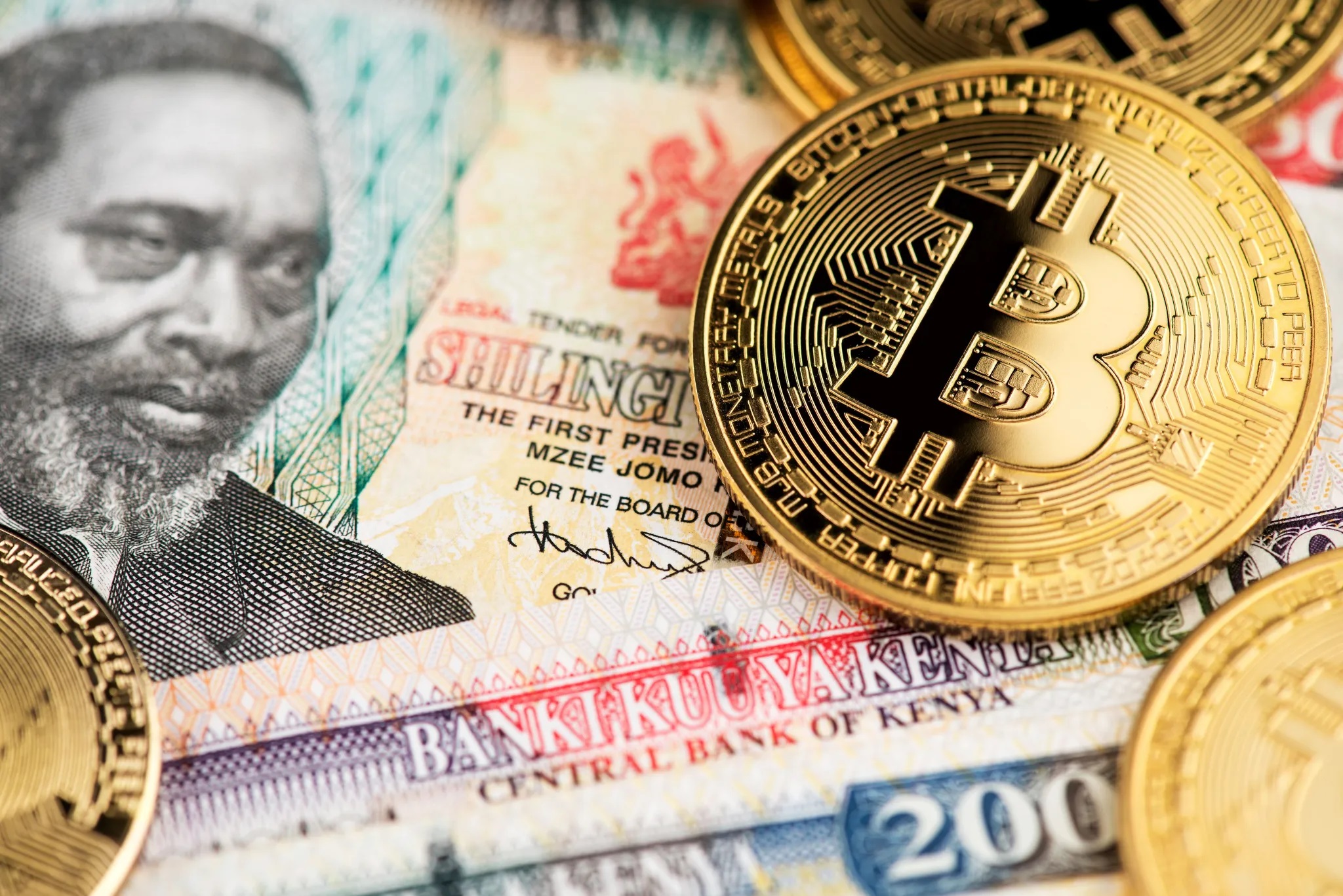Sub-Saharan Africa accounts for the global cryptocurrency economy’s smallest share, representing 2.7% of transaction volume worldwide between July 2023 and June 2024. Nonetheless, Sub-Saharan Africa received an estimated US$125 billion in on-chain value during this period, a US$7.5 billion increase compared to last year.
Cryptocurrency is undeniably transforming the financial landscape of the region, home to a number of high-ranking nations on the Chainalysis Global Adoption Index. Nigeria maintained its position as a top global player, ranking second worldwide, while Ethiopia (26), Kenya (28), and South Africa (30) also made the top 30.
Africans are leveraging crypto for business payments, as a hedge against inflation, and for more frequent, smaller (i.e. retail-sized) transfers.
Notably, Sub-Saharan Africa leads the world in DeFi adoption, likely driven in part by a growing need for accessible financial services in a region where only 49% of adults had a bank account as of 2021, according to the World Bank.
Stablecoins driving economic resilience and global connectivity across Sub-Saharan Africa
Stablecoins have become a key element of Sub-Saharan Africa’s crypto economy. In countries where local currencies are highly volatile and access to U.S. dollars is limited, dollar-pegged stablecoins like USDT and USDC have gained traction, offering businesses and individuals alike a reliable way to store value, facilitate international payments, and support cross-border trade.
Stablecoins now account for approximately 43% of the region’s total transaction volume.
For further context on the growing prominence of stablecoins, Chainalysis spoke to two key figures shaping Africa’s crypto landscape: Rob Downes, Head of Digital Assets, ABSA Bank, CIB — a major African bank operating in 12 African countries, and Chris Maurice, CEO and Co-Founder of Yellow Card — one of Africa’s leading crypto-asset exchanges.
A major driver of stablecoin adoption in Africa is the foreign exchange (FX) crisis gripping many countries. “About 70% of African countries are facing an FX shortage, and businesses are struggling to get access to the dollars they need to operate,” Maurice explained. In countries like Nigeria, where the local currency, the naira (NGN), has seen significant devaluation, stablecoins provide a much-needed alternative. “The banks don’t have dollars, the government doesn’t have dollars, and even if they did, they wouldn’t give them to you,” Maurice noted.
Small to medium-sized stablecoin inflows, which we measure under $1 million, tend to align with the naira’s depreciating value.
As the naira depreciates, we can see a rise in stablecoin inflows for transactions under $1 million, with more pronounced activity during periods of significant currency devaluation.
Ethiopia, Africa’s second-most populous nation with 123 million people, is now its fastest-growing market for retail-sized stablecoin transfers, with 180% in growth, year-over-year (YoY).
The birr (ETB), Ethiopia’s local currency, shed 30% of its value in July after the government eased currency restrictions in a bid to secure a US$10.7 billion loan from the IMF and World Bank. This loss in value will likely fuel further demand for stablecoins.
“Stablecoins are a proxy for the dollar,” Maurice said. “If you can get into USDT or USDC, you can easily swap that into hard dollars elsewhere.”
Stablecoins are also revolutionizing cross-border payments across Africa. “People don’t care about crypto,” said Maurice, emphasizing that the focus in the region lies instead on crypto’s practical use cases. He related examples of businesses that Yellow Card serves, such as a major food producer that uses stablecoins to pay suppliers abroad. Additionally, many African fintech companies rely on stablecoins to manage large sums of local currency, which they can then convert into stablecoins to facilitate cross-border payments.
Rob Downes of Absa Group noted a similar trend among institutional clients in South Africa.
“Our institutional clients are particularly interested in using stablecoins as a tool for managing liquidity and reducing exposure to currency volatility,” Downes told Chainalysis. In countries where the value of the local currency fluctuates, stablecoins could be an attractive option for businesses looking to hedge against currency risks.
Downes also pointed to the growing use of stablecoins for remittances and international payments. “We see stablecoins as a game-changer,” he said. For individuals sending money to family members abroad or paying for expenses, stablecoins provide a faster, more affordable alternative to traditional remittance services.
Beginning in late 2023, stablecoins have experienced sustained growth in South Africa’s local exchanges — over 50% month over month in October 2023. Stablecoins have displaced bitcoin as the most popular cryptocurrency received in recent months.
The regulatory landscape is progressively evolving in Africa. In South Africa, the Financial Sector Conduct Authority (FSCA) has provided regulatory clarity by classifying crypto assets as financial products, although there are no specific regulations for stablecoins.
Nigeria is ground zero for crypto activity in Sub-Saharan Africa
In recent years, Nigeria has emerged as a global leader in crypto adoption, driven by innovative use cases to combat economic challenges. Ranking second overall on our Global Adoption Index, the country received approximately US$59 billion in cryptocurrency value between July 2023 and June 2024.
Nigeria’s crypto activity is largely driven by smaller denomination retail and professional-sized transactions, with around 85% of the value of transfers received under $1 million.
Chainalysis spoke with Moyo Sodipo, COO and Co-founder of Busha, a crypto exchange with a presence in Nigeria. Everyday activities like bill payments, mobile phone credit top-ups, and retail purchases are increasingly being powered by crypto, according to Sodipo. “People are starting to see the real-world utility of cryptocurrency, especially in day-to-day transactions, which is a shift from the earlier view of crypto as just a get-rich-quick scheme,” he explained.
As in Ethiopia, Ghana, and South Africa, stablecoins are also a major part of Nigeria’s crypto economy, accounting for approximately 40% of all stablecoin inflows in the region — by far the highest in all of Sub-Saharan Africa.
Many Nigerians rely on stablecoins to send money across borders due to the inefficiencies and high costs associated with traditional remittance channels.
The average cost of sending a US$200 remittance from Sub-Saharan Africa is approximately 60% lower when using stablecoins compared to traditional remittance methods facilitated by fiat currency.
As in other African countries, a major driver of stablecoin adoption in Nigeria is inflation and the depreciation of the naira — which plummeted to a record low in February 2024. In Q1 2024, stablecoin value approached almost US$3 billion, making stablecoins the largest portion of sub-US$1M transactions in Nigeria.
In addition to the rising prominence of stablecoins, DeFi is experiencing a major moment in Nigeria, echoing the broader trend of Sub-Saharan Africa as the global leader in DeFi adoption. Nigeria stands at the forefront of this trend, with over US$30 billion in value received by DeFi services last year.
DeFi platforms are providing Nigerians with new opportunities to earn interest, take out loans, and engage in decentralized trading, “DeFi is a key area of growth, as users explore ways to maximize returns and access financial services that might otherwise be unavailable to them,” said Sodipo.
The December 2023 lift of the central bank’s ban on banks serving crypto companies has also played a pivotal role in this momentum. “Since the banking ban was lifted, it has opened up a lot of possibilities for partnerships and smoother transactions,” Sodipo explained. Building on this development, in June 2024, the Securities and Exchange Commission (SEC) of Nigeria introduced its Accelerated Regulation Incubation Program (ARIP), which now requires all virtual asset service providers (VASPs) to register and undergo an assessment before full approval. “The industry is bullish on ARIP; it’s a shift away from uncertainty and a positive move towards regulatory clarity,” said Sodipo.
While Nigeria is making progress with initiatives like ARIP, many FIs remain hesitant to fully engage with the crypto sector due to lingering regulatory ambiguities. “Banks are still cautious, waiting for clear signals from the central bank and SEC before fully entering the market,” Sodipo explained.








